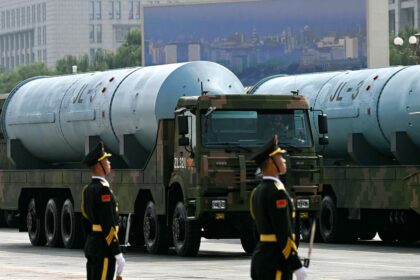Why Cybersecurity Collaboration Is a Top US Priority
In an era where digital threats are growing in scale and sophistication, the United States has launched a sweeping initiative to enhance cybersecurity collaboration with its allies. This move comes as state and non-state actors increasingly target critical infrastructure, government systems, and private enterprises, threatening not only national security but also the stability of the global digital ecosystem. The US government, recognizing that no single nation can secure cyberspace alone, is doubling down on international cooperation, intelligence sharing, joint training, and the development of unified response strategies to cyber incidents.
- Why Cybersecurity Collaboration Is a Top US Priority
- Key Pillars of US Cybersecurity Collaboration
- The Joint Cyber Defense Collaborative: Unifying Efforts
- Real-World Operations: USCYBERCOM and Allied Exercises
- Allied Partnerships: The Foundation of Global Cybersecurity
- Policy and Strategy: The US International Cyberspace and Digital Policy Strategy
- Case Studies: US Cybersecurity Collaboration in Action
- Challenges and the Road Ahead
- In Summary
Officials emphasize that the interconnected nature of modern technology means vulnerabilities in one country can quickly become global risks. As such, the US is working closely with partners across the world to build resilient defenses, support emerging technologies, and establish common standards that mitigate vulnerabilities across networks.
Key Pillars of US Cybersecurity Collaboration
The US approach to international cybersecurity is multifaceted, involving government agencies, the private sector, and allied nations. Several core strategies underpin this effort:
- Intelligence Sharing: Rapid exchange of threat and vulnerability information to enable timely responses.
- Joint Training and Exercises: Simulated cyberattack scenarios to improve collective readiness and response.
- Unified Response Strategies: Coordinated playbooks and operational processes for managing incidents.
- Support for Emerging Technologies: Collaborative research and development in areas like artificial intelligence (AI), quantum encryption, and secure telecommunications.
- Establishing Common Standards: Development of shared guidelines and best practices to reduce systemic risk.
These pillars are operationalized through a network of alliances, public-private partnerships, and multilateral organizations.
The Joint Cyber Defense Collaborative: Unifying Efforts
At the heart of the US strategy is the Joint Cyber Defense Collaborative (JCDC), established by the Cybersecurity and Infrastructure Security Agency (CISA). The JCDC brings together government, industry, and international partners to synchronize national cyber incident management and campaigns. By facilitating rapid bilateral and multilateral threat information sharing, the JCDC ensures a unified understanding of cyber threat activity and coordinates responses to incidents.
The collaborative also produces world-class cybersecurity guidance, fusing insights from global partners into advisories and publications that help organizations defend against evolving threats. Through structured collaboration, the JCDC executes plans that counter adversaries and reduce risk across the digital landscape.
Real-World Operations: USCYBERCOM and Allied Exercises
The US Cyber Command (USCYBERCOM) plays a critical role in operationalizing cyber defense. Its International Coordinated Cyber Security Activity (INCCA) is a prime example of how the US and its allies work together in practice. INCCA deploys defensive cyber teams globally to detect, mitigate, and share intelligence on malware and vulnerabilities targeting Department of Defense (DoD) networks. This not only strengthens the security of US military systems but also enhances the resilience of partner networks.
By coordinating with Joint Force Commanders, interagency partners, and international allies, USCYBERCOM ensures that cyber defense capabilities are continuously improved and that networks remain resilient in the face of evolving threats. The emphasis on innovation, collaboration, and vigilance is central to safeguarding cyberspace and defending against adversaries that threaten national and allied security.
Allied Partnerships: The Foundation of Global Cybersecurity
International cooperation is not just a strategic choice—it is a necessity. Mieke Eoyang, Deputy Assistant Secretary of Defense for Cyber Policy, underscores the importance of leveraging both government and private sector expertise:
“We need to do a better job of understanding how we can use security cooperation and other mechanisms to help our allies and partners improve their cybersecurity. This is actually an area where we can really use industry’s help because we have tremendous capability inside the United States in terms of providing cybersecurity for large enterprises, and I would argue that some of the best talent is actually in the private sector.”
Allies play a key role in identifying where adversaries might attempt to compromise capabilities, and the US is actively working to build a lifecycle approach to managing the cyber workforce, including opportunities for private sector experts to contribute to national defense.
Policy and Strategy: The US International Cyberspace and Digital Policy Strategy
The US has articulated its vision for international cyber cooperation through the International Cyberspace and Digital Policy Strategy. Ambassador Nathaniel Fick, the first US cyber ambassador-at-large, describes the strategy as a roadmap for generational decisions in technology, centered on “digital solidarity.” This means working together on shared goals, building capacity, and providing mutual support to create a secure, rights-respecting, and innovative tech ecosystem.
The strategy is built on three guiding principles:
- An affirmative vision for a secure and inclusive cyberspace
- Integration of cybersecurity, sustainable development, and tech innovation
- Addressing the whole digital ecosystem, including infrastructure like cloud and undersea cables
Four areas of action guide implementation:
- Promoting an open and resilient digital ecosystem
- Aligning rights-respecting digital governance internationally
- Advancing responsible state behavior in cyberspace
- Building international partner capacity to combat cybercrime and other threats
This comprehensive approach responds to challenges posed by repressive regimes, cybercrime, and the misuse of emerging technologies, while also fostering collaboration on AI safety and trusted technology deployment.
Case Studies: US Cybersecurity Collaboration in Action
US-Japan Alliance: Securing Critical Infrastructure
The US-Japan alliance has become a cornerstone of regional cybersecurity, especially as geopolitical tensions rise in the Indo-Pacific. Both nations have prioritized the protection of critical infrastructure—such as energy grids, telecommunications, and financial systems—against sophisticated cyberattacks. Joint initiatives focus on quantum encryption, AI-driven defense systems, and secure telecommunications, ensuring that the digital backbone of both societies remains resilient.
Trilateral Research: US, UK, and Canada
In a landmark agreement, the US, UK, and Canada have committed to collaborative research and development in cybersecurity and artificial intelligence. This partnership, led by agencies like DARPA (US), Dstl (UK), and DRDC (Canada), aims to develop new concepts of operation, trustworthy AI systems, and tools for rapid software certification. The CASTLE program, for example, trains AI to autonomously defend networks against advanced threats, while other projects focus on human-AI teaming and resilient information domains.
Dr. Nick Joad, Director Science and Technology at the UK Ministry of Defence, highlights the significance:
“Our international research collaborations with both the US and Canada are some of our most vital and enduring partnerships. This agreement cements our collective commitments to advancing emerging cyber security technologies such as cyber security and artificial intelligence to enhance the defence and security of our nations.”
Public-Private Partnerships: IBM and Allied Support
The US government is also leveraging private sector expertise to bolster allied cyber capabilities. A recent $26-million contract awarded to IBM will provide cybersecurity support for allied governments in Europe and Eurasia, focusing on digital identification, incident response, and capacity building. This initiative, part of USAID’s Cybersecurity Protection and Response program, aims to create a more resilient digital ecosystem and supports broader US goals of promoting inclusive growth and democratic societies through secure technology.
Five Eyes and Multilateral Intelligence Sharing
The Five Eyes intelligence alliance—comprising the US, UK, Canada, Australia, and New Zealand—serves as a model for multilateral intelligence sharing and coordination. Cybersecurity leaders from these nations regularly provide joint threat briefings and collaborate on strategies to counter global cyber threats, reinforcing the importance of trusted partnerships in maintaining digital security.
NATO: Collective Defense in Cyberspace
NATO has recognized cyberspace as a domain of operations, integrating cyber defense into its core tasks of deterrence, crisis management, and cooperative security. The alliance conducts regular exercises, such as the annual Cyber Coalition Exercise, and has established the NATO Integrated Cyber Defence Centre to enhance network protection and situational awareness. NATO’s Virtual Cyber Incident Support Capability (VCISC) streamlines allied support during cyberattacks, connecting nations with resources for malware analysis, threat intelligence, and digital forensics.
Recent exercises have focused on protecting critical infrastructure, such as undersea cables in the Baltic Sea, and responding to hybrid threats from state actors like Russia and China. NATO’s approach emphasizes information sharing, mutual assistance, and the development of national cyber defense capabilities among its members.
US-India Cybersecurity Alliance
The US-India partnership has rapidly evolved, with cybersecurity emerging as a central focus. Joint initiatives include research in quantum encryption, AI-driven defense, and secure telecommunications infrastructure. The two nations have launched projects like the 5G Open RAN initiative and the “Rip and Replace” program to remove vulnerable equipment from telecom networks. Collaboration also extends to securing space systems and enhancing the resilience of defense technologies, setting a global example of cooperation in addressing digital threats.
US-South Korea: Strategic Cybersecurity Cooperation
The US and South Korea are expanding their Mutual Defense Treaty into cyberspace, with a new Strategic Cybersecurity Cooperation Framework. This framework emphasizes deterring adversaries, protecting critical infrastructure, and securing digital currency and blockchain applications. Both countries are investing in cloud computing, digital infrastructure, and emerging technologies like semiconductors and quantum computing. The partnership aims to uphold democratic values in cyberspace and reduce global dependence on adversarial technology supply chains.
Challenges and the Road Ahead
Despite significant progress, international cybersecurity collaboration faces several challenges:
- Bureaucratic Hurdles: Differences in organizational structures and legal frameworks can impede information sharing and joint operations.
- Rapidly Evolving Threats: The cyber domain is highly dynamic, with new vulnerabilities and attack vectors emerging constantly.
- Workforce Shortages: Recruiting and retaining skilled cyber professionals remains a global challenge, with competition from the private sector.
- Balancing Security and Privacy: Ensuring robust defenses while respecting individual rights and democratic values requires careful policy design.
To address these issues, the US and its allies are investing in workforce development, harmonizing standards, and fostering a culture of continuous learning and adaptation. The integration of emerging technologies like AI and quantum computing presents both opportunities and risks, making ongoing collaboration essential.
In Summary
- The US is leading a comprehensive initiative to enhance cybersecurity collaboration with global allies, focusing on intelligence sharing, joint training, and unified response strategies.
- Key partnerships include alliances with Japan, the UK, Canada, India, South Korea, and multilateral organizations like NATO and the Five Eyes.
- Public-private partnerships, such as those with IBM, are critical for building allied cyber capacity and resilience.
- Emerging technologies like AI and quantum encryption are central to future cyber defense strategies.
- Challenges remain, including bureaucratic differences, evolving threats, and workforce shortages, but ongoing collaboration and innovation are strengthening global digital security.












